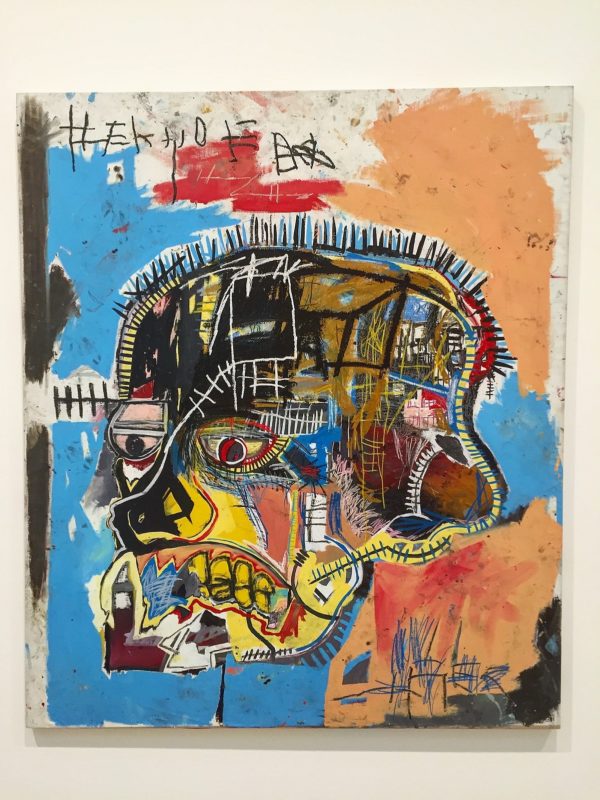Jean-Paul Basquiat’s art redefined the artistic landscape in more ways than we can count. From bringing the issues of African Americans to the forefront to developing his unique visual language and inspiring thousands of artists worldwide, he is now an indisputable icon of contemporary art. One of the things that made so distinct was his use of symbols, many of which are still mysteries to art historians. Today, we will take a look at some of the most prominent Basquiat symbols and review some of the theories regarding their interpretation.
The Meaning of Basquiat Symbols: A Deep Dive into the Legend’s Mind
The Crown
A crown is one of the most recognizable Basquiat symbols, which appeared in almost every single one of his works. For example, his “untitled” piece from 1982, which was sold for $29.3 million at , featured a character wearing a golden crown. The meaning of the crown is still highly debated: some say that Basquiat crowned himself a ‘king’ of art, while others believe it was a reference to his personal life and the struggles he dealt with. Another popular theory suggests that the crown is actually a ‘W’ and an homage to Andy Warhol, with whom the artist had a close relationship.
The Griot
Many oral traditions around the world used to value, and still value, the role of a storyteller. A griot, or a bard, is an important figure in West African culture. Basquiat often included references to his heritage in his work, borrowing techniques and visuals from African art to create his distinct style. Many also believe that the artist thought of himself as a storyteller who used visual art instead of the spoken word.
The Dinosaur
A dinosaur is by far one of Basquiat’s most mysterious motifs. This character appears in several pieces, including Snakeman and Pez Dispenser. The latter painting, depicting a dinosaur wearing Basquiat’s signature crown, was named after a children’s collectible toy that dispenses candy. As ‘suggestive dichotomies’ were some of the primary artistic devices in the artist’s work, one can speculate that Pez Dispenser was meant to criticize capitalism and consumerism.

Basquiat created a complex system of symbols that not only were eye-catching but also served as tools for social critique and self-reflection. He was a revolutionary in all senses of the word, and his legacy continues to this day.




